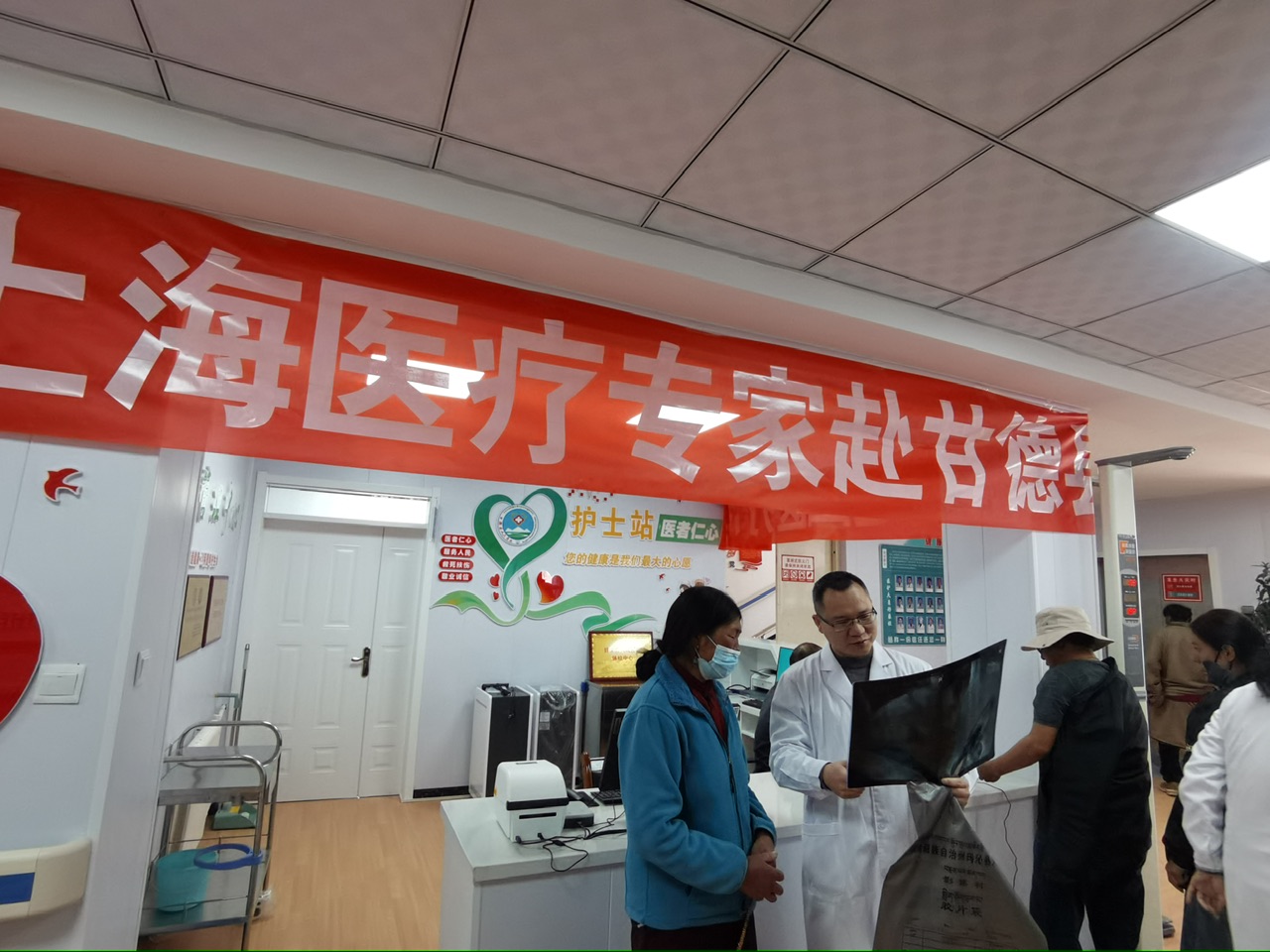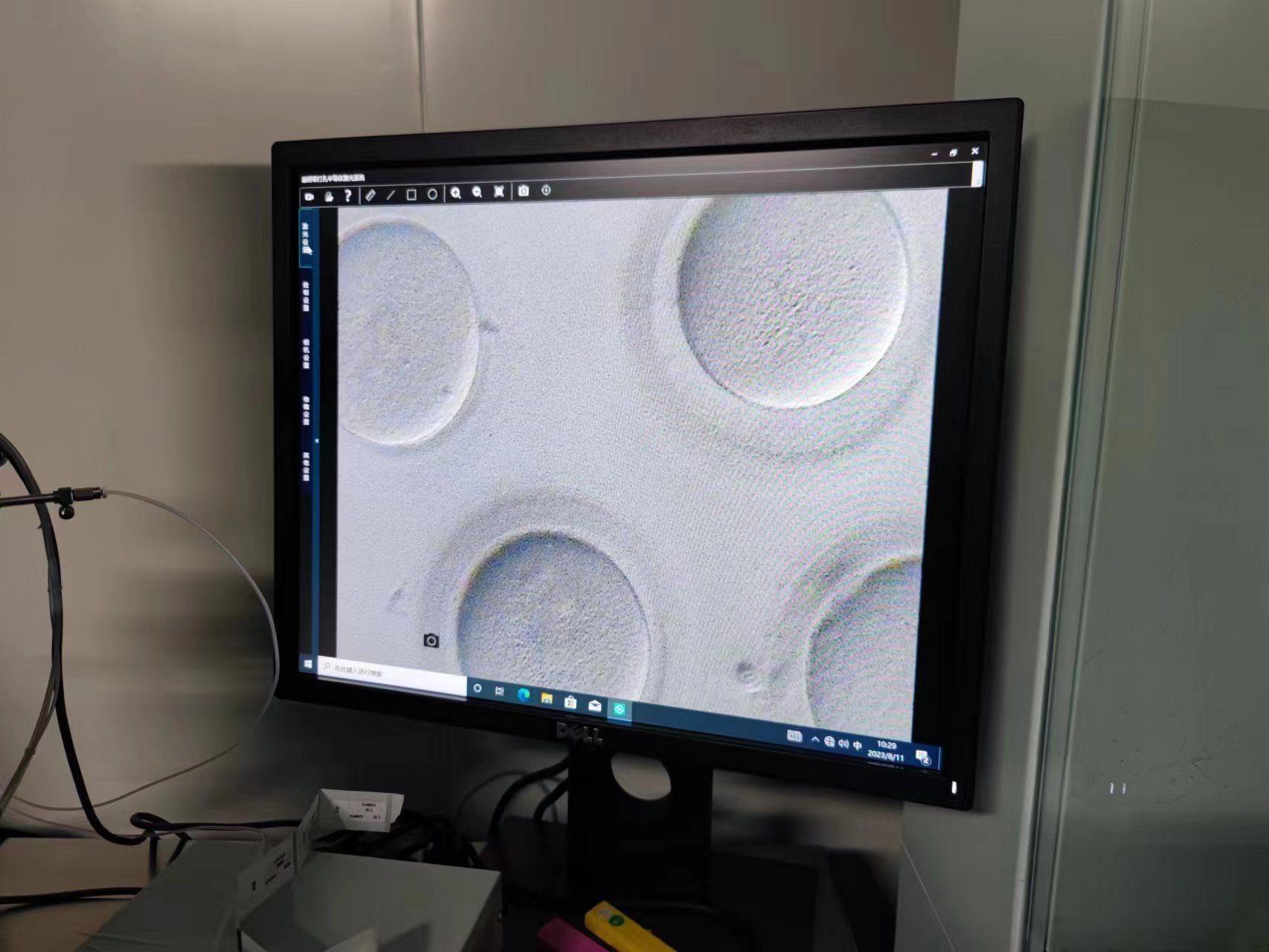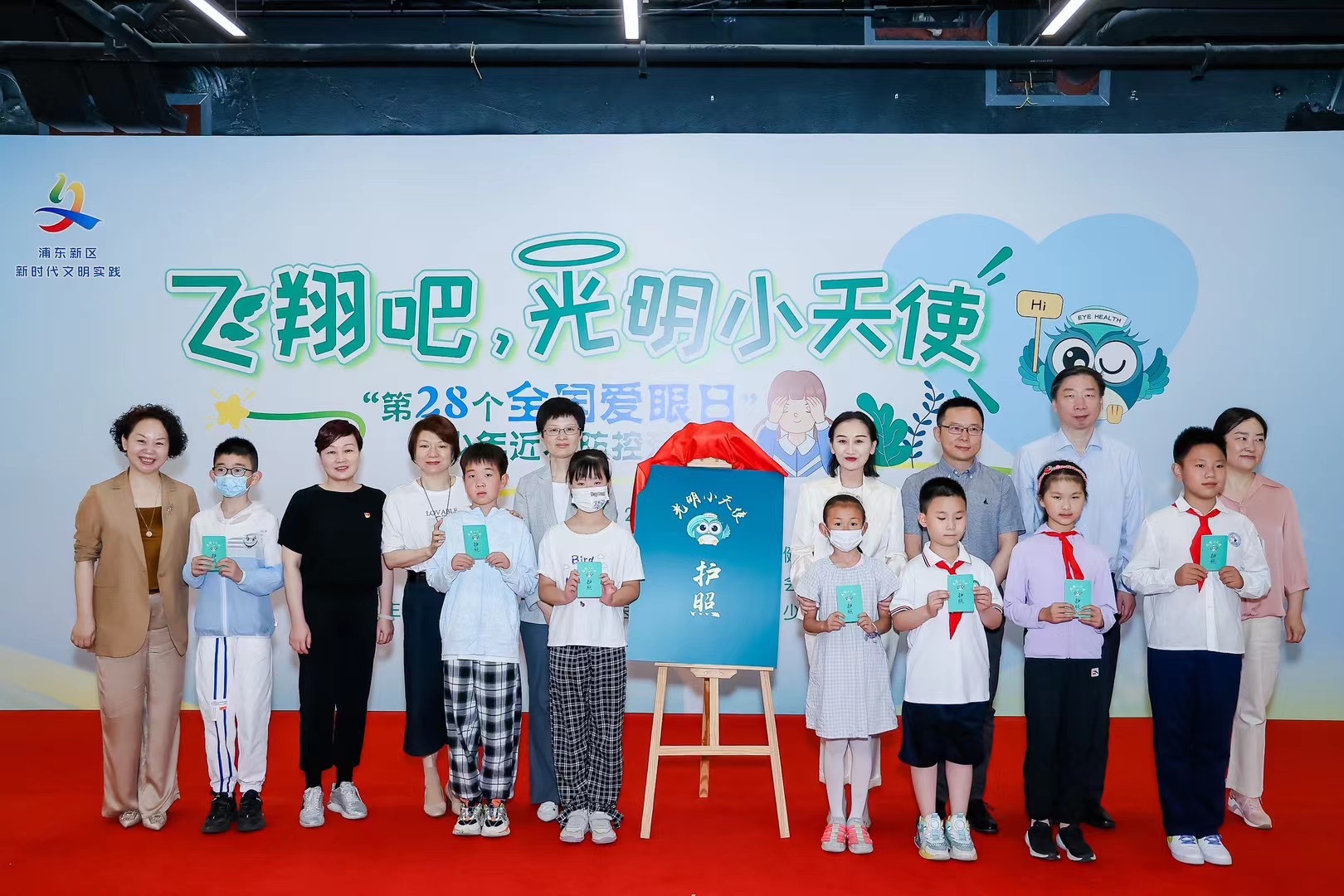Understand the "past and present" of Shanghai Hospital, the architecture of a century old building | Hospital | Century old
Urban architecture is a carrier of cultural spirit, carrying specific values of the era, culture, and society, presented to the world with diverse architectural aesthetics. In Shanghai, a variety of old hospital buildings are no exception. They witness the origin of hospitals, silently record the annual development of history, and showcase the progress of human urban civilization and society.
Recently, Huashan Hospital affiliated with Fudan University and Shanghai Medical Union jointly held a hospital culture forum titled "Reading Centennial Hospital Architecture and Inheriting Shanghai Urban Spirit", and launched a photo exhibition titled "The Past and Present of Shanghai's Centennial Hospital Old House". Historical photos blend with reality, carrying the original mission of the hospital's establishment and continuing the bits and pieces of urban culture.
At the time of the image exhibition, the Huashan Hospital affiliated with Fudan University initiated the establishment of the "Shanghai Centennial Hospital Architectural Culture Inheritance and Cooperation Alliance" with eight hospitals in Shanghai. The event planner and Executive Vice Chairman of the Huashan Hospital Union, Su Jiachun, told reporters that the future alliance will use century old hospital buildings as a platform to explore and promote hospital stories and cultural connotations, create hospital cultural brands, and allow more citizens to enter the old hospital buildings and perceive the stories of medical kindness in the long river of history.
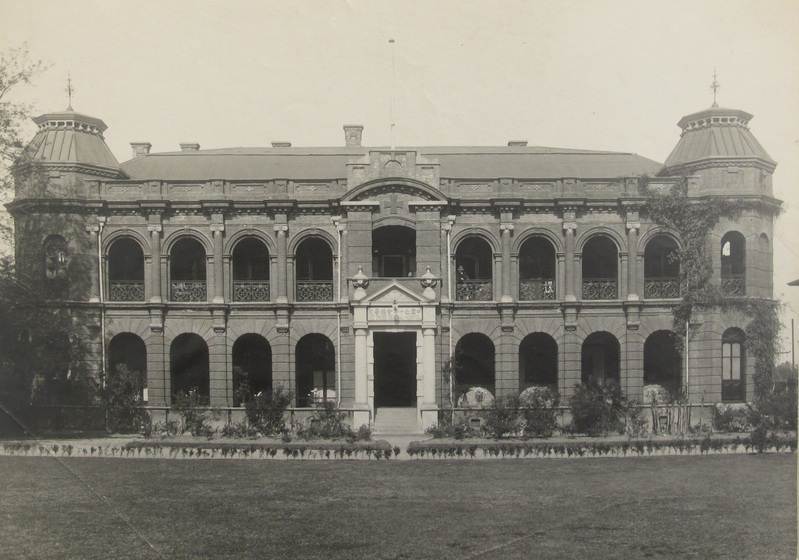
Old photos of the Huashan Honghui Old Building
New photo of the old building of the Huashan Honghui
The Far East Metropolis has absorbed the essence of architecture for a century

The familiar "Red House Hospital" among Shanghai residents has a history of nearly 140 years. The reason why it is affectionately called the "red house" is because the hospital has a red roof. For over a hundred years, the white angels under the red roof have protected the health of women and children in a region.
In the "Shanghai Centennial Hospital Architectural Culture Inheritance and Cooperation Alliance" established this time, Red House Hospital is also one of the eight hospitals, the rest of which are Renji Hospital, Shiyi Hospital, Tongren Hospital, Long March Hospital, Huashan Hospital, Ruijin Hospital, and East China Hospital.
As one of the earliest port cities in the country, Shanghai is a metropolis in the Far East. From the establishment of the first church hospital in 1844 to the founding of the country, 300 hospitals were born. Professor Hua Xiahong from the School of Architecture and Urban Planning at Tongji University brought statistics on the forum: from 1844 to 1949, the layout of hospitals in Shanghai was roughly divided into several periods: from 1844 to 1899, mainly church hospitals and hospitals founded by foreigners; The tripartite relationship between church, public, and private hospitals formed from 1900 to 1949, especially after the victory of the Anti Japanese War when municipal comprehensive and specialized hospitals began to take shape.

According to Zheng Shiling's "Shanghai Modern Architectural Style", incomplete statistical information shows that 17 modern hospital buildings in Shanghai are still used in hospitals today; 17 modern non hospital buildings that are now used in hospitals; Four modern hospital buildings are currently not used in hospitals. Among these buildings, 26 hospital buildings have been rated as excellent historical protected buildings, 2 are municipal level cultural relics, and 1 is a district level cultural relic.
The Red House Hospital was born in the first stage in 1883. At that time, in a small village by the Huangpu River and outside the West Gate, the first female medical missionary to come to China, Ms. Elizabeth Rofschner, opened a medical room in the small village. The medical room charges low fees for medical treatment and medication, providing impoverished fishermen in the surrounding areas with a place to seek medical treatment.
In June 1884, the clinic rented two rooms on the original basis and opened an outpatient department called "Shanghai Ximen Women and Children's Hospital" in Chinese. Many articles introducing Hudak architecture state that Ximen Women and Children's Hospital was designed by Hudak in 1926 and built in 1928. Due to the red roof of the hospital at that time, the people affectionately called it the "Red House Hospital".
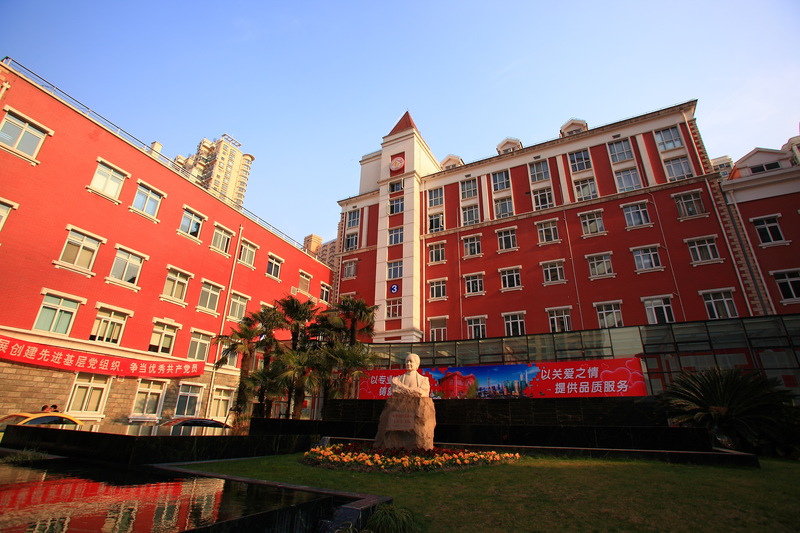
Old photos of Red House Hospital
New photo of Red House Hospital
"It can be said that Shanghai's modern hospital architectural heritage has a large number, wide distribution, and a wide range of types, with diverse styles, modern spaces, and advanced technology." Professor Hua Xiahong said, "From construction concepts, materials, to process management, multiple parties have participated in extensive international cooperation, which is an important symbol of Shanghai's modern urban civilization."
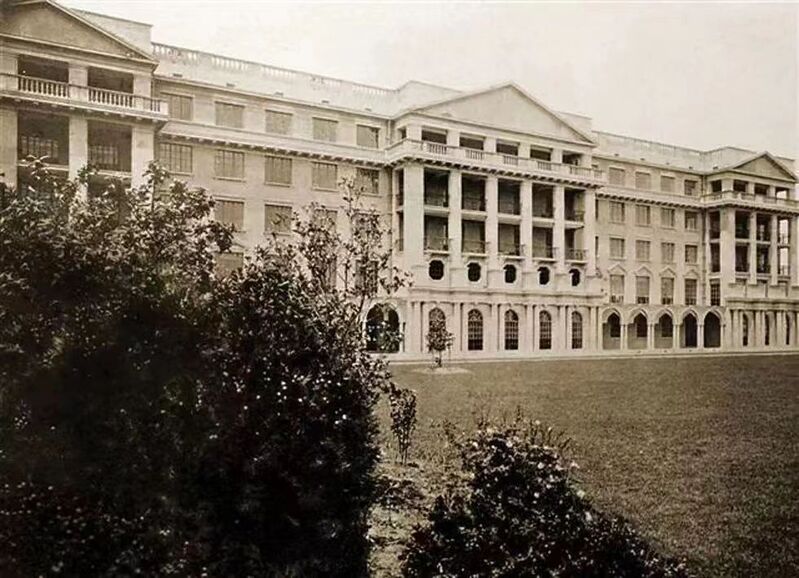
The century old hospital architecture, with advanced design concepts, reveals humanistic care. For example, Hua Xiahong: The predecessor of the East China Hospital affiliated with Fudan University was the Hong'en Hospital built in 1926. This is the first independent design by the famous Hungarian architect Hudak and has been used as a medical building ever since. This building, with a unique Renaissance style, features a row of open corridors on the ground floor. "This design reveals the architect's ingenuity. Open corridors are absolutely necessary in summer, but may partially block sunlight in winter, so only some wards are provided with open corridors. According to statistics at that time, about 60% of the wards at Hongen Hospital will be occupied in summer."
Old photos of East China Hospital
New photo from East China Hospital

Green grass, open corridors, and square columns. The architectural task book from over a hundred years ago stated that in order to meet the unique needs of Shanghai's special types of patients and adapt to the subtropical climate, building equipment, medical technology, and equipment need to be researched and utilized by products from various countries around the world. This is also a microcosm of the Far East metropolis, Shanghai, embracing the essence of the world.
Architectural craftsmanship complements each other, and medical care is benevolent
In the architecture of the old hospital, there is the craftsmanship of the builders and the kindness of the medical staff. Nowadays, the Second Affiliated Hospital of Naval Medical University located on Fengyang Road, formerly known as Baolong Hospital, was built in 1900. The founder, German Baolong, lost both his parents when he was two years old. During his service in the German Navy, he visited Shanghai and witnessed the spread of epidemics and plagues in the old city. He expressed his strong desire to use his knowledge and strength to help the poor in China build a hospital.

Old photos of the Long March Hospital
New photo from Long March Hospital
The news about Baolong Hospital in 1909 stated that there was a pharmacy, several storage rooms, outpatient room, instrument room, and operating room on the first floor. The main operating room has three operating tables, equipped with disinfectors, instrument boxes, and hand sinks, which actually meet all the requirements for modern sterile surgery. There is a well-equipped instrument room outside the operating room, which is a small room equipped with an electric light bath for treating rheumatic patients.
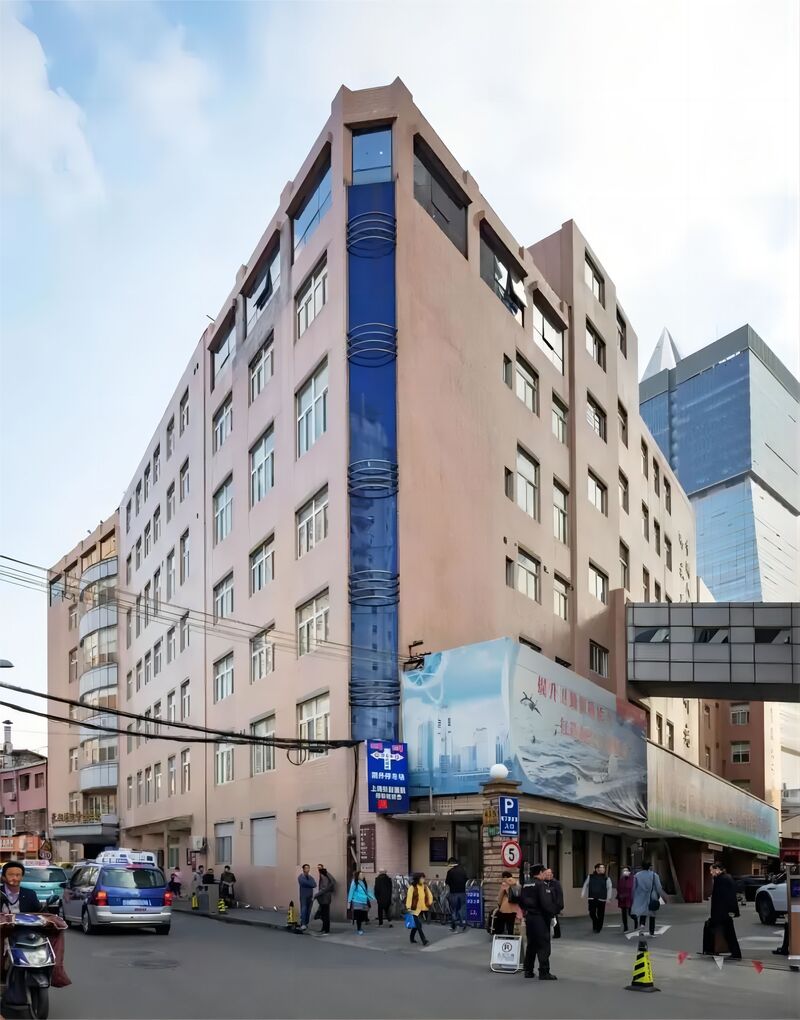
The main pharmacy at the other end of the building is connected to the outpatient room, where German doctors provide charity consultations for 50 to 70 patients every night. There are 12 rooms upstairs for Chinese paid patients, with 6 rooms for male and 6 rooms for female patients. It is worth mentioning that the red brick building that stood on Fengyang Road back then treated patients differently - poor Chinese people could enjoy free treatment, while Chinese employees of German companies had to pay for medical treatment.
The construction of Baolong Hospital received donations from the then German Consul General Knape, Shanghai Dao Tai, and some Chinese businessmen, including Ye Chengzhong, Zhu Baosan, and Yu Qiaqing.
The name Ye Chengzhong, a wealthy businessman from Zhejiang, also connects with other modern hospitals built in Shanghai. Ye Chengzhong's son Ye Ziheng will support Yan Fuqing in the future to build the first hospital built by Chinese people themselves - Zhongshan Hospital and the new building of Shanghai Medical College. Yan Fuqing and Ye Ziheng both graduated from the Medical Department of St. John's University, which is now the Tongren Building on the Changning campus of East China University of Political Science and Law.
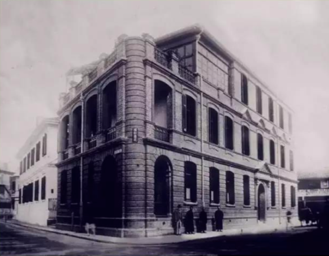
The intersection of a century old hospital history has created thought-provoking stories in Shanghai. Time can be traced back to 1866, when Shanghai had just opened its port. At the corner of Tanggu Road and Daming Road, there was a western-style building and a small medical bureau opened. This medical institution was jointly managed by Pastor Tang Aili and Chinese Pastor Wu Hongyu of the Anglican Church at the time, and was also the first medical institution established by the Anglican Church in China.
The Xiaoxiao Medical Bureau quickly gained popularity: at the beginning, it opened consultations every Monday, Wednesday, and Friday, and soon the daily number of patients reached 100-300. It was changed to six days a week, but it has been bustling for a year. So, the Episcopal Church in the United States raised funds to expand 11 wards, and the expanded medical department had a thunderous name - Tongren.
In 1880, Wen Hengli was appointed as the director of Tongren Hospital and began to establish a medical department. He personally served as a professor in the medical department of St. John's College. In 1882, the clinical teaching of the medical department was relocated to Tongren Hospital. In 1896, St. John's College was reorganized into St. John's School, with Wen Hengli serving as the director of the medical department. Students from Tongren Hospital were officially referred to as students and taught in English.
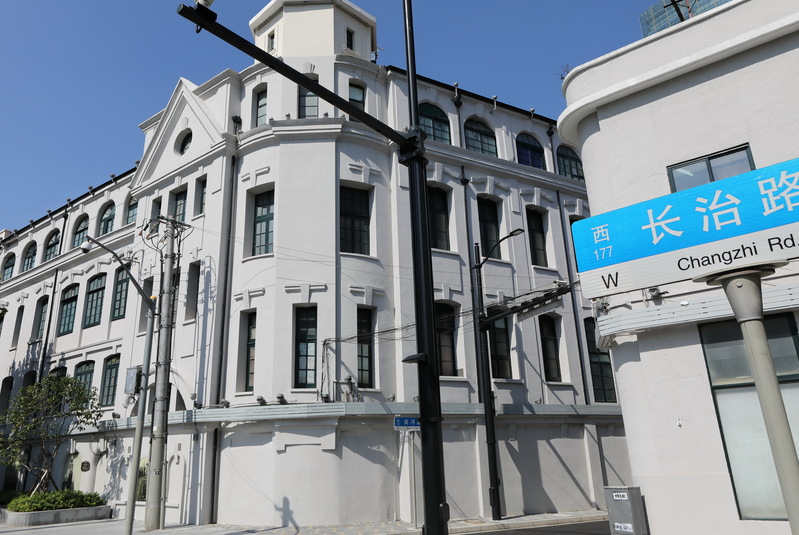
Afterwards, numerous outstanding medical talents will emerge here, including Yan Fuqing and Ye Ziheng.
Nowadays, walking at 155-159 Changzhi Road and 193 Nanxun Road in Hongkou District, excellent historical protected buildings come into view: the original site of Tongren Hospital, which was built in 1914. This small brick and wood structure building, built in the 1920s, has an L-shaped floor plan and a three section composition on the facade. There is also a separate facade design inside the spacious staircase. Starting from here, Tongren Hospital has pioneered nursing education in China, continuing to write countless stories of saving lives, helping the injured, and caring doctors.
Old photos from Tongren Hospital
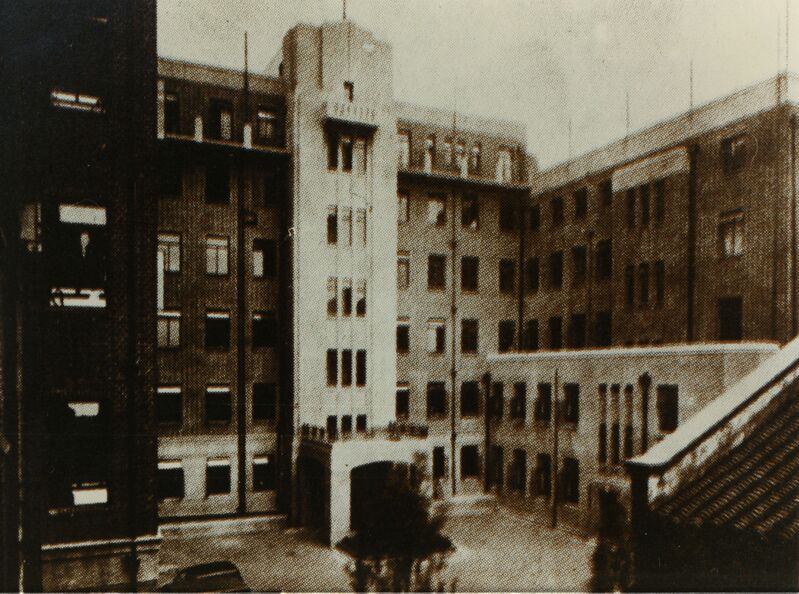
New photo of the original site of Tongren Hospital
Architecture is the "calling card" of culture and spirit
Professor Gao Xi from the History Department of Fudan University mentioned at the forum that the culture and spirit of a hospital are the core indicators that determine the success or failure of a hospital. In the late 19th century, Western hospitals transformed from church charitable aid organizations to professional medical facilities, and public and private hospitals developed rapidly. In 1910, there were over 1400 hospitals and 420000 beds in the United States. The development and characteristics of modern hospitals are almost synchronized with those of China and the world.
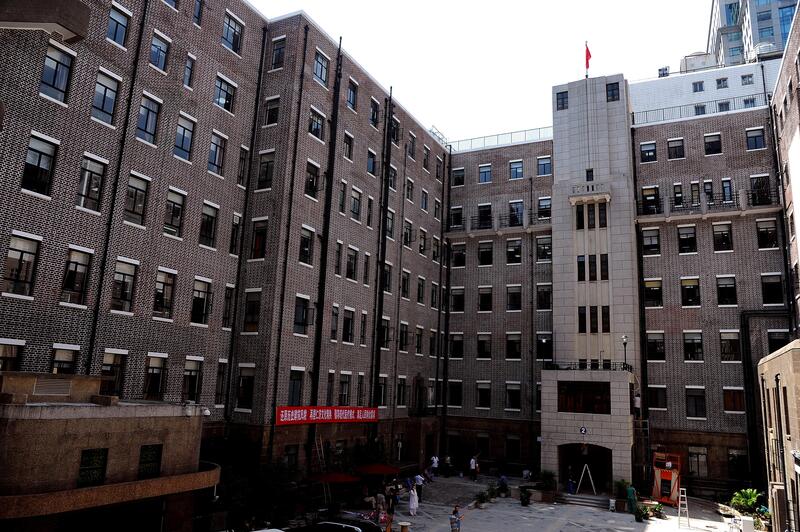
As the earliest church hospital built in Shanghai, Renji Hospital was completed in 1844 and the inpatient building of Renji Hospital located on Shandong Middle Road was completed in 1932. The construction funds for the inpatient building were sourced from the Leister Foundation. Following the will of this British resident who has lived in Shanghai for most of his life, the Leister Foundation donated 1 million taels of silver and four properties to Renji Hospital. After the inpatient building was completed and put into use, Renji Hospital was once known as "Leister China Hospital" to commemorate its good deeds.
Luo Meng, Deputy Director of the Shanghai Municipal Health Commission, said that the starting point of his career as a doctor is at Renji Hospital. After traveling for a century, when future generations see this old hospital building, they can still feel various humanistic design concepts: there are fire exits, fire hydrants, professional signs, practice certificates and other supporting facilities outside the inpatient building; Unlike most hospitals that use marble in public corridors, old buildings use rubber bottoms with steel wire mesh, and the two "feet" under the wooden doors of the ward are equipped with corresponding copper plates to facilitate the advancement of the hospital bed.
Old photo of Renji Hospital
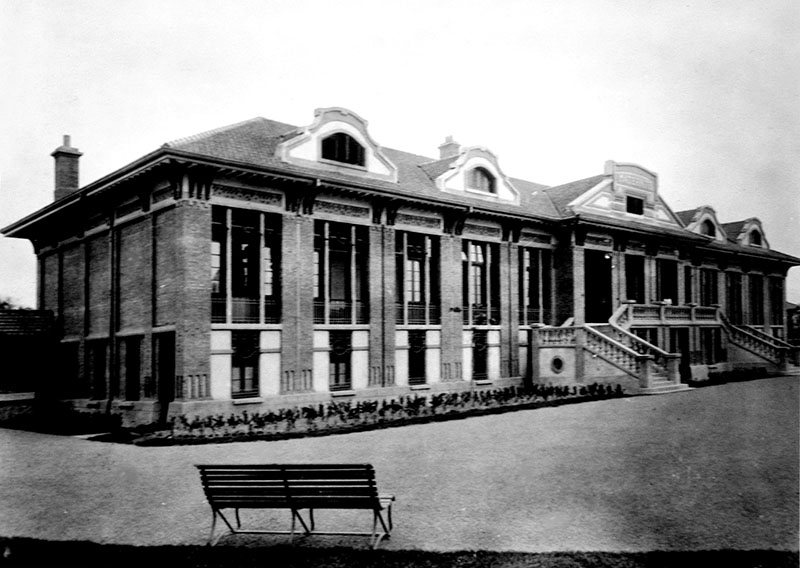
New photo of Renji Hospital
To this day, some design concepts of the old buildings of Renji Hospital are still being preserved and applied in clinical practice. For example, there is a table in the middle of the large ward, where nurses used to work, making it convenient to observe patients in a timely manner and the doctor-patient relationship is invisibly harmonious. Nowadays, the renovated old building also retains space, allowing more doctors to write medical history in the ward and communicate with patients at zero distance. The stained glass in the old building is as colorful as the stained glass in Notre Dame Cathedral in Paris, with crystal clear glass handles... These architectural details have unique humanistic value and have been faithfully preserved.
Lei Shi De, who funded the inpatient building of Renji Hospital, was actually one of the earliest foreign architects to enter Shanghai, and Lei Shi De also left many iconic buildings in Shanghai. Qiao Zhengyue, Deputy Secretary General of the Historical Architecture Protection Committee of the Shanghai Architectural Society, introduced that in 1935, the Leicester Medical Research Institute was officially completed and opened. At that time, the media praised it as "the largest and best equipped research hospital in the Far East, comparable to any similar institution internationally." Famous physiologists such as Iben, Cai Qiao, Shen Jichun, and virologist Tang Feifan have all engaged in scientific research work here.
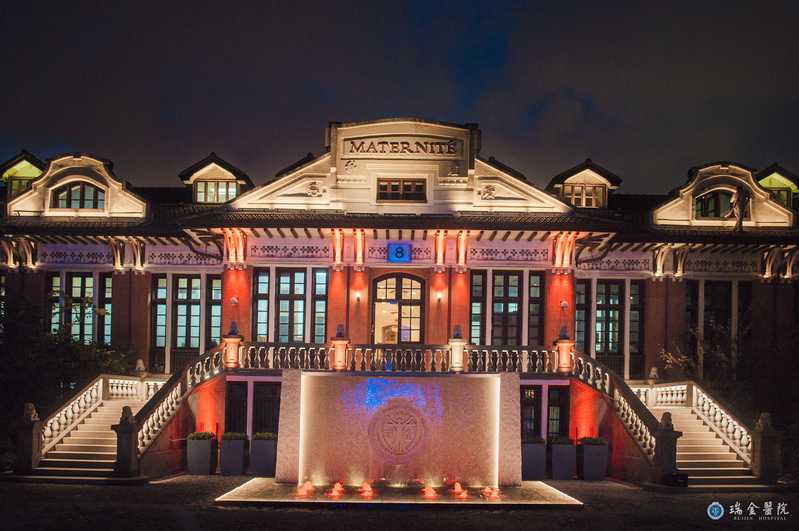
The Leicester Medical College, built in 1935, is located on present-day Beijing West Road. The building itself is mainly in a modernist style and is a square building with decorative art style features in some details. In the eyes of experts, it is also an important component reflecting the diverse modern architectural styles of Shanghai. This excellent historical protected building has a central axis symmetrical main facade with a simple design. The renovation of the old site started this year and will be completed next year. At that time, Shanghai residents will have the opportunity to see the charming style of century old buildings.
Entering Architecture to Experience More Scientific Beauty
Understanding the old buildings of Shanghai hospitals, four academic experts from history, architecture, cultural and tourism studies, and communication studies gave new insights and values to hospital architecture from their respective fields. From creating stories to style, space, and technology, from spatial perception to image dissemination, we explored and understood the inherent cultural heritage of hospitals.
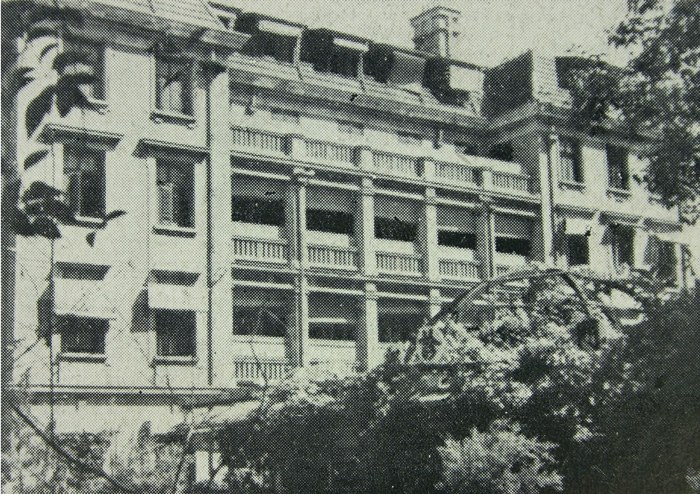
In a century of wind and rain, some old hospital buildings have disappeared with the passage of time and the changes of the times, while some rare and rare ones have survived to this day. It is these century old hospitals that originated in modern Shanghai that have become the spark of modern medicine in Shanghai. Su Jiachun introduced that the "Shanghai Centennial Hospital Architectural Culture Inheritance Cooperation Alliance" has joined hands to promote the creation of a high-quality route for the "medical staff cultural inheritance and education base" of each century old hospital, making efforts to better showcase the thickness, warmth, and social responsibility of Shanghai's century old hospital medical culture.
Old photo of Ruijin Hospital
New photo from Ruijin Hospital
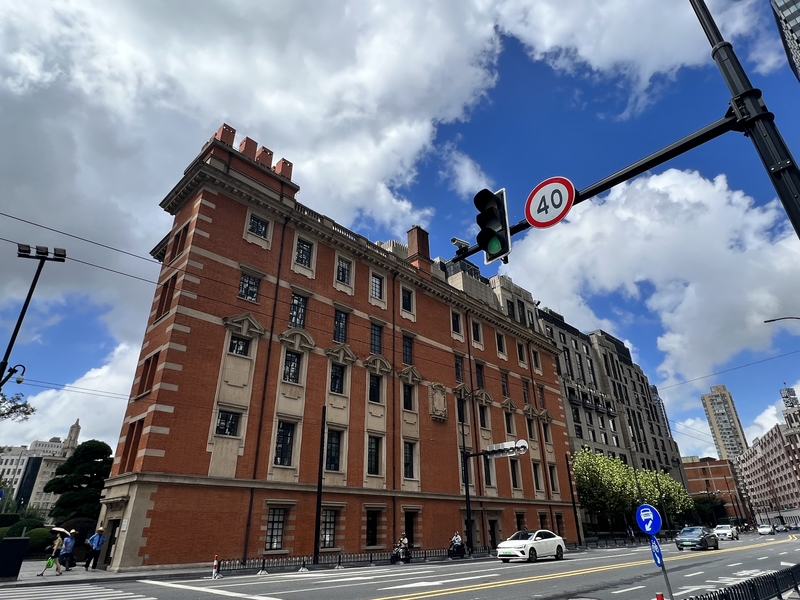
Zhao Dandan, Chairman of the Shanghai Medical Union and Secretary of the Party Committee of the Shanghai Shenkang Hospital Development Center, awarded medals to eight hospitals under the "Shanghai Centennial Hospital Architectural Culture Inheritance and Cooperation Alliance" and became one of the first to build the "Shanghai Medical Workers Cultural Inheritance and Education Base". In the future, a normalized mechanism has been established for medical staff throughout the city to visit the century old hospital buildings in Shanghai, learn about the humanistic heritage and cultural heritage of Shanghai hospitals.
Old photos from City First Hospital
New photo from City First Hospital
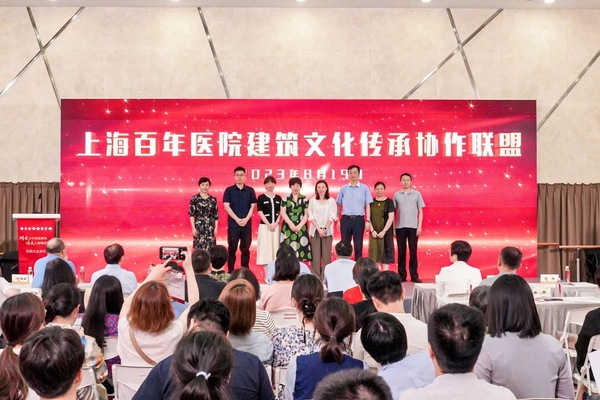
Feeling the beauty of architecture and science, experiencing the beauty of humanities and life, Luo Meng, Deputy Director of the Municipal Health Commission, finally stated that "reading the century old architecture of hospitals" is just a good start. In depth discussions will be conducted around more common characteristics of hospitals over the past century, and hospital culture will be seen from hospital architecture. Culture will be integrated into the high-quality development of hospitals. In the future, more citizens will have the opportunity to enter architecture, understand the century old hospital culture, and experience the development process and achievements of the national medical and health industry.
